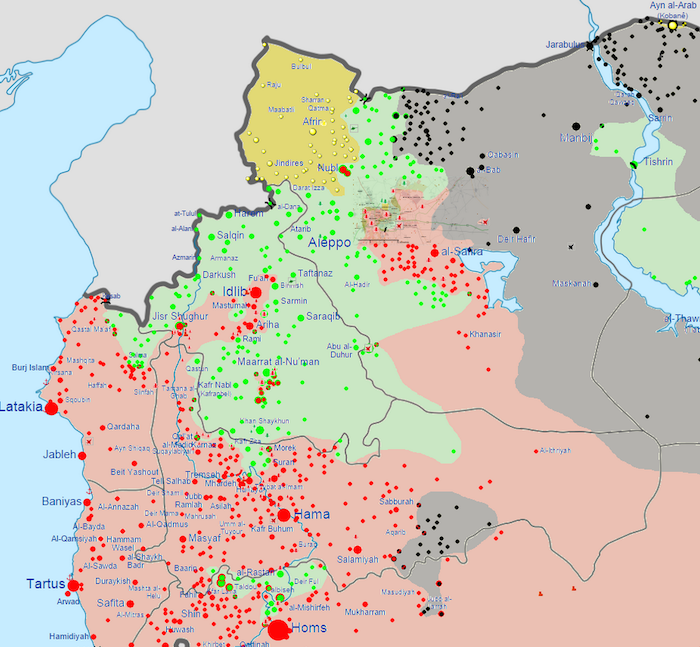This seems kind of predictable by now: Assad has, quite logically, decided to ignore the coalition air incursions in eastern Syria — not taking the bait to try to stop them — and concentrate on daily air raids on western Syrian cities and towns. In the weeks preceding the start of US-led airstrikes in eastern Syria, the Syrian government forces had finally been forced to start splitting their energies between western rebels and ISIS control in the east. The new situation means the regime can refocus on one side of the three-way civil war: the Free Syrian Army / Nusra Front fighters that form the western opposition.
The result? Loyalist planes and helicopters are pounding away at them again, now unencumbered by either ISIS attacks on eastern Syrian bases or any kind of coalition no-fly zone anywhere in the country. A U.S. official observed to the New York Times, “Essentially, we’ve allowed them to perform an economy of force” — although this is unintentional and not in any way coordinated, as far as we have been told publicly.
Worse, some of the air raids are hard to source, especially because first-day US airstrikes on so-called “Khorassan Group” targets in western Syria (specifically the rebel-dominated Aleppo area) made it seem like the US was planning to strike targets all over the country instead of focusing on strategic eastern ISIS targets. This confusion has led to the US being incorrectly blamed for some of the high civilian casualty bombings the regime has ordered since then.
If nothing else, we are learning that the accidental president, Bashar al-Assad, and his top strategists know how to play a full-scale civil war like a delicate instrument. They don’t bite off more than they can chew, they work with anyone who will help, they avoid or delay taking on stronger enemies (whether ISIS or the United States) directly whenever possible, and they play everyone off everyone else. This is some of the most pragmatic, high-level Machiavellianism — devoid of nostalgia or ideological considerations — that we’ve seen lately in the world and the region.

A map of government territory in northwestern Syria as of October 7, 2014. (Red = government, gray = ISIS, yellow = Syrian Kurds, green = other rebels.) Map via Wikimedia. Click to enlarge.



Hello,
The map you use is a joke and is from march 2014. At least I posted it in march:
[removed by mod]
And this is probably the most current map, but as one can see, these maps are NOT dependable!
[removed my mod]
Thanks for your patience and feel free to mail me what you think of that.
Your map is self-evidently not “probably the most current map,” given that it is wildly and obviously out of date with regard to ISIS positions and Kurdish territory. It looks months old at best. The map I included a clipping of was up to date within the last couple weeks and matched news accounts. I’ve removed your links to stop the spread of misinformation and to prevent you trolling for traffic via misleading comments. If you believe I am mistaken or that this was not your intent, please email me separately using our contact link. Thanks.
I am very sorry for your misunderstanding.
According to wikipedia the map in your article was firstly uploaded in May 2014 by the same user who provides that same map now for October.
The vast majority of the territorial differences amounts of nothing more than desert anyway. Except for Aleppo that is partly controlled by the terrorists but has been surrounded by the Syrian Army.
Your map didn’t even show ISIS approaching Kobani. It was distinctly out of date. The map I provided had been updated quite recently.